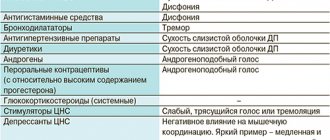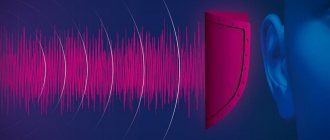Many singers at the beginning of their vocal journey are interested in understanding the key theoretical terms of this profession (among such concepts is timbre). The timbre of the voice determines the tone and color of the sound that is heard during sound reproduction.
It is very difficult to learn vocals without special theoretical knowledge; without it, it can be difficult to evaluate your own vocal or simply speech data and skillfully correct them.
What is timbre and what does it depend on?
Timbre is the sound coloring of the voice, giving it an individual sound. It conveys a person’s emotional state: excitement or joy, fear or anger.
Speech sounds have a fundamental tone and partial subtones called overtones. The combination of overtones creates an individual timbre for each person.
It depends on the physiological characteristics of a person: on the structure of the vocal cords - their length, width, elasticity, mobility, on the volume of the trachea, on the structure of the resonator cavities - the pharynx, oral, nasal cavities, paranasal sinuses.
Types of Voices
All voices are divided into several types depending on the range of sounds that they can cover. For men it is tenor, baritone, bass.
For women - soprano, mezzo-soprano, contralto. Each type is divided into several subtypes, which, being in the same sound range, differ from each other due to the different timbres of the performers.
Tenor is the highest male singing voice.
The following types of tenor are distinguished:
- altino (countertenor). A very high, rare voice, reminiscent of a woman’s;
- light tenor. A high voice that has a lower, chesty overtone;
- lyric tenor It has a soft, delicate color. Its owner was Sergei Lemeshev;
- lyric-dramatic tenor. Close to the lyric tenor, but has deeper overtones;
- dramatic tenor The lowest of the tenors, close to a baritone.
Baritone is a medium-sounding voice and the most common. Baritone is:
- lyrical. Close to the dramatic tenor, but with a deeper tone;
- lyrical-dramatic. The most prominent representative of the baritone family. It was possessed by Muslim Magomaev, Georg Ots;
- dramatic. Lower, stronger, richer shade. Dmitry Hvorostovsky had a dramatic baritone.
Bass is the lowest sounding voice. Bass happens:
- high (bass-baritone). The brightest, lightest representative of the family. The famous owner of the bass-baritone is Fyodor Chaliapin;
- central (dramatic). Solid, sonorous, heavy bass;
- low (bass profundo). Very rare, thick, low voice. Boris Shtokolov had this.
Soprano is the highest female voice. Depending on the timbre, the soprano can be: coloratura, lyric-coloratura, lyric, lyric-dramatic, dramatic. Coloratura soprano is the lightest, sonorous, airiest. Dramatic is the lowest, deepest.
Mezzo-soprano is a medium-high voice. The mezzo-soprano timbre is warm, thick, rich. It can also be coloratura, lyrical, dramatic. Owners of mezzo-soprano are Elena Obraztsova, Lyubov Kazarnovskaya.
Contralto is a low female voice, much less common than soprano and mezzo-soprano. The modern owner of the contralto is the Polish opera singer Ewa Podleszcz.
Children's voices are usually divided into low (alto) and high (soprano for girls, treble for boys).
Behavior of overtones[edit]
The behavior of each overtone over time also carries vital information about timbre. Those. the duration of the presence of overtones, their subsequent appearance, or the change in their amplitude over time.
Example:
Open pattern 8 and listen to 3 sounds. 1st is a regular saw, 2nd is the same saw to which filtering is applied (quick cutting of high overtones with a filter), 3rd is the same as 2nd, but the filter works in the opposite direction (gradual addition of overtones). These 3 timbres are quite different in their sound.
Open pattern 9 and listen to 2 sounds. 1st sounds a sound whose timbre is “not very good”, and the second has a more interesting timbre. The only difference between these sounds is that 2 has a filter applied! This example shows that the nature of the behavior of overtones can radically change the timbre of a sound, and can make the sound sound much more interesting! Don't underestimate the filter!
Conclusion:
experiment using different types of filters, here the most important role is played by the dynamics of changes in the spectral envelope over time at all stages of the sound: ADSR (attack, stationary part, decay).
What can affect the timbre
The following factors can affect the tone:
- Adolescence. In boys, the voice “breaks” - it becomes lower, rougher. This is a natural process established by nature. For girls, such a striking event as “breaking” of the voice does not occur, but as they grow older, it becomes deeper and more expressive.
- Colds. During illness, the voice becomes low and dull, hoarseness appears. After recovery, he returns to his normal state.
- Smoking. Over time, the voice may become lower and rougher, especially noticeable in women.
- Alcohol. Alcohol also has a negative effect on the voice, which becomes hoarse and rough. This happens due to irritation of the vocal cords.
- Stress, emotional overstrain. Because of these factors, a person may have poor control of their voice, which may cause it to tremble, change pitch, become shrill, or rough. When unfavorable factors are eliminated, the voice will return to its normal sound.
- Professions where the voice is an “instrument”. These are singers, announcers, teachers, and tour guides. People in these professions become so accustomed to using their voices at work that even in everyday life they can involuntarily speak somewhat theatrically or excessively loudly. A striking example of this is the scene from the film “The Blonde Around the Corner,” where the main character’s mother, speaking too loudly, explains: “This is professional.” It turns out that she works as a teacher.
- Excessively hot, cold, spicy food negatively affects the ligaments. It makes your voice hoarse and rough, just like alcohol.
- Poor posture. A hunched back does not allow the chest to expand, so the voice becomes quiet and colorless.
- Age-related changes. Hormonal age-related changes in the body lead to loss of elasticity in the ligaments, the voice becomes more rattling and creaky.
Non-existent page
The page you are reading does not exist.
Sure ways to get nowhere:
- write rudz
.yandex.ru instead of
help
.yandex.ru (download and install Punto Switcher if you don’t want to make that mistake again) - write i ne
x.html, i
dn
ex.html or index.
htm
instead of index.html
If you think we brought you here on purpose by publishing an incorrect link, please send us the link at .
Sound timbre and its main parameters
Timbre is a subjective characteristic of sound quality that allows sounds of the same pitch and intensity to be distinguished from each other.
The main objective parameters that determine the assessment of timbre by musicians are the spectrum and nature of the transition process of the fundamental tone and overtones. In addition to the basic sound parameters that characterize its timbre, there are a number of additional ones. These include reverberation, vibrato, unison, inharmonicity of overtones, beats, distance to the sound source, nonlinearity of equal loudness curves, nonlinearity of the amplitude characteristics of hearing. The timbre perception of sound is influenced by the conditions of its reproduction (type of musical piece being performed, the presence of extraneous noise, etc.), the psychological state of listeners (emotional uplift or depression, biased attitude towards the music being listened to, a musician or a musical instrument), individual characteristics hearing (different people have different hearing thresholds and sensations of loudness and pitch) and the musical taste of listeners (people of different characters and ages, as well as different aesthetic education, perceive not only music, but also the timbre of sound differently).
Basic timbre parameters. The sound spectrum is determined by the number and amplitudes of its components. Musical sounds usually have many components. The shape of a sound vibration depends both on the composition of its constituent components and on the phase relationships between them. The difference in the phases of the harmonics leads to different shapes of the sound signal, but, other things being equal, to the same perception of timbre. A sound with inharmonious overtones with a constant spectral composition has a signal shape that changes over time (for example, the sound of a piano).
The forms of sound signals of musical instruments are different. Different forms of sound vibrations correspond to different spectra. However, the shape of the sound signal also depends on the intensity of the sounds, the spectrum of the sound (for example, for a piano) depends on the force of the strike on the key. Musical instruments are also characterized by the presence of a greater number of overtones for lower tones. In addition, the spectral composition of sounds, as a rule, changes as they attenuate and due to other reasons.
The transient process of sound can be considered as a special case of amplitude modulation. With such modulation, additional side spectrum components appear even for a sinusoidal signal. The more complex the forms of modulating and modulated oscillations, the more complex the spectrum of the entire oscillatory process becomes. At the moment of attack, as a result of the complication of the spectrum, the sound acquires a characteristic color specific to this type of instrument.
Additional sound parameters that affect timbre. The distance to the sound source affects the perceived volume and spectrum, since the absorption of high-frequency components by air occurs more intensely than mid- and especially low-frequency components.
Reverberation changes the timbre of the sound as transient processes are prolonged. If the reverberation time is too short, the timbre is characterized by shades of dryness and lifelessness. The music becomes inexpressive, and high volume is required from the performer. Too much reverberation time makes the sound boomy and unintelligible. Sounds float on top of each other. The best timbre conditions correspond to some optimal reverberation time. Reverberation also affects the timbre of the sound, since the reflection of sound in the room is different for different frequencies. As a result, the spectra of the original and reflected sounds are not the same, which leaves its mark on the timbre.
How to change the tone
Timbre is given to a person by nature. It depends on the physiological characteristics of the body, so it is fundamentally impossible to change it. But if nasality or hoarseness appears, action must be taken.
For some people, hoarseness adds charm. But if hoarseness causes nothing other than irritation, it is necessary to understand the reasons for its occurrence. It may be the result of an untreated disease, in which case a doctor’s consultation is necessary.
Possible causes may be smoking, drinking alcohol, or eating too spicy or salty foods. Then you should give up bad habits.
Nasality requires a clear consultation with an otolaryngologist, as it is a consequence of untreated ENT diseases that have become chronic. In children, nasal sounds may indicate enlarged adenoids.
It happens that a person simply does not like his voice, although there are no obvious defects (nasality, hoarseness, hoarseness). In this case, special exercises for developing timbre will help.
They won't be able to change your voice beyond recognition, but they will make it cleaner, smoother and deeper. Some exercises help make the tone a little lower.
Is it possible to achieve results quickly and forever?
Fast?! From 2 weeks to 3 months! Forever: yes, mostly. It is important to understand that a low voice timbre in men depends not only on efforts to change it, but also on heredity.
All of the tips listed really work and help correct cacophonous squeaking, but it is not always possible to achieve the desired brutality in speech at home.
If exercises and techniques are not 100% effective in a particular case, you can use medications or the achievements of plastic surgery to change your voice permanently.
How to hear your real voice
Others hear a person’s speech differently than he does. There is an interesting way to hear yourself the way others hear.
To do this, you need to take sound reflectors - two pieces of cardboard or thin folders - and place them edge-on to your head in front of your ears. You can even just place your palms edgewise, depicting a kind of Cheburashka.
Now you need to say something out loud - the sound reflector will not allow the voice to penetrate directly into the ears and the person will hear the sound reflected from the surrounding surfaces, as others hear it.
This little experience will help you hear yourself from the outside, evaluate possible shortcomings, and start working with your voice.
Initial part of the sound (click)[edit]
A much more significant role in the recognition of timbre is played by the process of unfolding its spectrum over time, primarily at the initial stage of sound attack. If you remove part of the attack of the sound, it is very difficult to identify the timbre of the instrument. Let's do an experiment.
Download this file and listen to it =>
File. This tool has had its initial attack removed (0.1 seconds removed). Try to understand what kind of instrument it is, chances are that you will immediately guess what kind of instrument it is if you hear it very often. But, mind you, when you heard the sound, you thought about it and did not immediately put forward a version.
Remember what kind of tool you think it is. Now download a file where the initial attack of the same instrument is not cut out (click) =>
File. When you heard this sound, you immediately thought without hesitation that it was a piano, and no doubts arose!
The attack process for most musical instruments and voices lasts several tens of milliseconds. During this period of time, the ear perceives a gradual expansion of the spectrum over time, as more and more new overtones enter at different speeds and amplitudes, and recognizes the timbre of a given instrument. This recognition process is influenced by such numerous factors as: the initial creak of a bow, the beginning of a note on a brass instrument, the sound of breathing, the initial flapping of a saxophone reed, the thumping sound of a hammer on a piano, etc.
Therefore, for timbre recognition, the period of formation of the temporal structure is important. Not only is the click important, but also the decay period. Listen to the same piano sound where there is practically no decay =>
File:
It’s not very similar to a piano, there is a similarity in sound, but it’s still not the same. Live music is a constant dynamic, a constant change, and this is due to the deep properties of the auditory system.
Example:
open pattern 6 and listen to 2 sounds. 1st simple sine, 2nd is the same sine, but its initial component has been changed (by influencing it). Changing the initial component led to a radical change in the timbre of the sound, and only a few milliseconds were changed at the beginning!
Open pattern 7 and listen to 2 sounds. 1st square, 2nd is the same square, but its ADSR envelope has been changed.
Conclusion:
experiment with the initial component of the sound (click), for example, the influence of the operator, these manipulations can radically change the timbre, because At this moment, the timbre of the entire sound is recognized. Experiment with the sound envelope, this can give softness or, conversely, hardness to the timbre.
Exercises for developing timbre
For a beautiful, natural sounding voice, it is necessary to carry out special exercises. They will allow you to relax the muscles of the face, larynx, diaphragm, and vocal cords.
First you need to start watching your posture - straighten your back, straighten your shoulders, tighten your stomach. As noted above, this will help expand the chest and make the voice stronger.
"Model"
A very simple exercise helps to relax the facial muscles - you need to open your mouth slightly, like a fashion model on set. For all its simplicity, it perfectly helps to relax the muscles around the mouth.
"Horse"
Another exercise to relax your facial muscles is to stretch your lips forward and snort like a horse.
"Yawn"
This is an exercise to relax the larynx. You need to throw your head back and open your mouth wide, imitating a yawn. At the same time, you can say “aaaaa” in a drawn-out manner, changing the tonality. It is likely that after completing the exercise you will really want to yawn. This is very good, because a natural yawn perfectly relaxes the larynx.
To relax the diaphragm, it is very important to learn to breathe with your stomach. Most adults breathe through the chest; in this case, the diaphragm is compressed. The result is a weak and inexpressive voice.
"Sound M"
To relax the muscles of the larynx and face, you need to exhale and say “mmmmm” with your mouth closed.
"Sound I"
To make your voice sound a little lower, it is recommended to do the following exercise: sit down, lower your head down so that your chin touches your chest. Pronounce the sound “iiiiii” in a low voice and slowly raise your head, trying to maintain the pitch of the sound being pronounced. At first it will be difficult - the tonality will increase, but as you practice, the pitch in both positions will become the same.
To lower the timbre, you need to control the speed of speech. The higher the speed, the higher the voice.
You need to do the exercises every day, devoting 10 to 15 minutes to them. After 3-4 weeks of regular practice, you will be able to hear the result - your voice will become deeper and more expressive.
Related posts:
- What is "War and Peace" about? Summary of the novel “War and Peace” by chapters. All answers...
- How to get your lost voice back? It happens that the voice disappears at the most inopportune moment. Symptoms, exercises...
- Logorhythmic classes and correctional means By various means, speech therapy classes contribute to the effective correction of speech in children...
- From experience in diagnosing and forming creative imagination Research on creative imagination - diagnosis and its formation in children...











